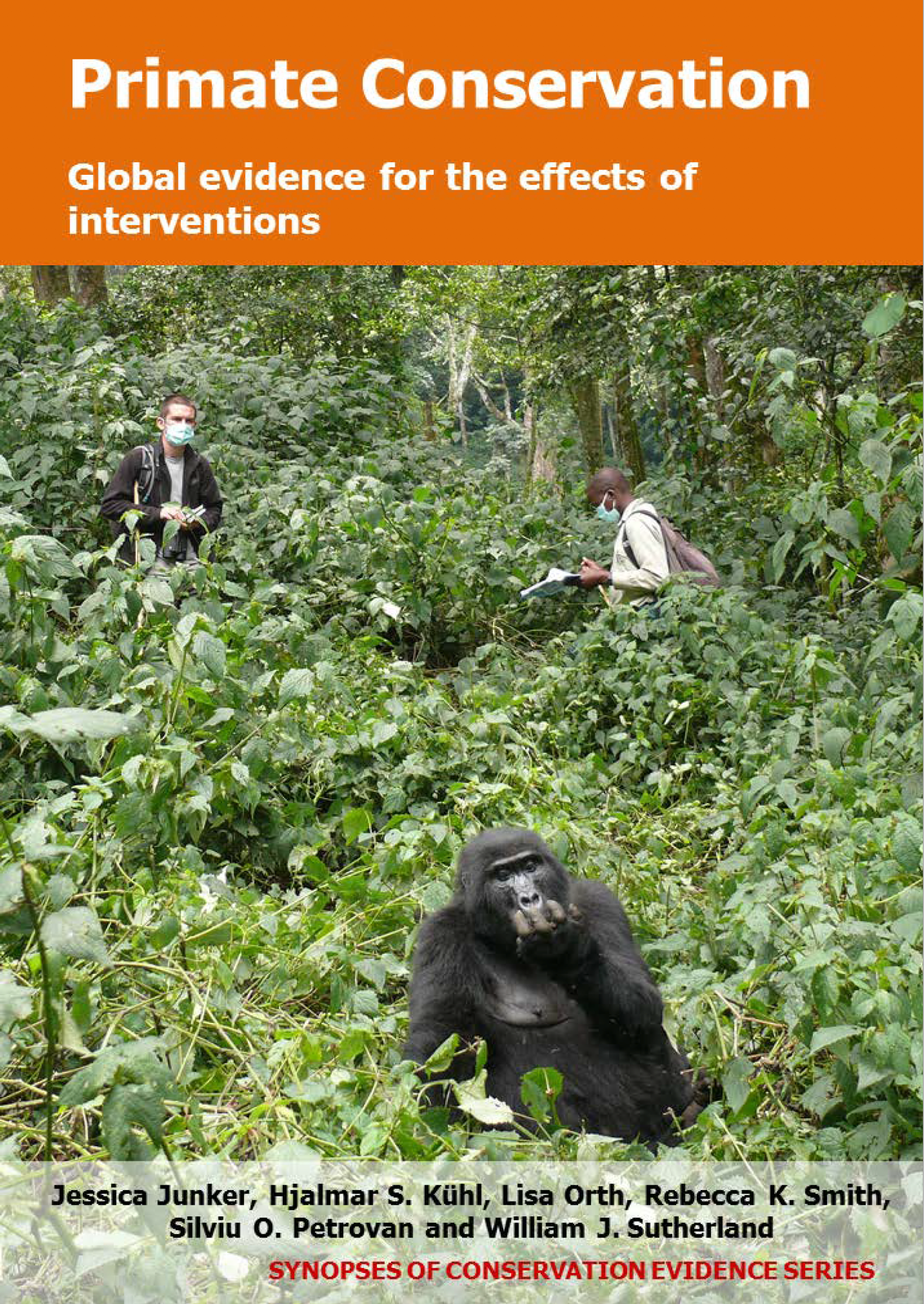Preventative vaccination of habituated or wild primates
-
Overall effectiveness category Trade-off between benefit and harms
-
Number of studies: 4
View assessment score
Hide assessment score
How is the evidence assessed?
-
Effectiveness
70% -
Certainty
40% -
Harms
30%
Study locations
Supporting evidence from individual studies
A before-and-after trial in 1977-1987 in tropical dry forest in Cayo Santiago, Puerto Rico (1) found that annual mortality rate of free-ranging, introduced rhesus macaques Macaca mulatta decreased after implementation of preventative tetanus toxoid inoculations. In 1977-1984, annual mortality of the monkeys was 6.39% of which 19.5% were caused by tetanus infections. After the implementation of yearly inoculation procedures in 1985 and 1986, annual mortality decreased to 3.69% of which only 0.8% was caused by tetanus infections. During the annual trapping in 1985 all monkeys except two new-born infants received the first dose of tetanus toxoid inoculation. In 1986, inoculated monkeys received their second inoculations and yearlings received their first inoculation. In the following years, yearlings and 2-year-old macaques were inoculated by three doses of vaccine treatments.
Study and other actions testedA before-and-after trial in 1996-1999 in a tropical rainforest in Conkouati Reserve, Republic of Congo found that 14 out of 20 (70%) reintroduced wild-born orphaned chimpanzees Pan troglodytes troglodytes that were vaccinated against poliomyelitis and tetanus alongside eight other interventions were still alive 3.5 years post-release. None of the adult females produced offspring. Chimpanzees underwent veterinary screens and were treated for internal parasites. Before reintroduction in groups into habitat with low densities of wild chimpanzees, they spent six to nine years on one of three forested islands in the region to acclimatize. Orphan chimpanzees were rehabilitated and fostered at a nearby sanctuary. Researchers were permanently present on-site and monitored released chimpanzees with radio-collars. The study does not distinguish between the effects of the different interventions mentioned above.
Study and other actions testedA before-and-after trial in 1994-1999 in mixed tropical forest in Conkouati-Douli National Park, Republic of Congo found that the majority of reintroduced central chimpanzees Pan troglodytes troglodytes that underwent vaccinations prior to release alongside 16 other interventions, survived over five years. Out of 20 reintroduced chimpanzees were vaccinated against polio and tetanus, 14 survived (70%). No statistical tests were carried out to determine whether the population change was significant. Individuals were radio-collared and followed at distances of 5-100 m. Rehabilitated orphaned chimpanzees underwent parasite treatment and veterinary screens before translocation in four subgroups to the release site where resident wild chimpanzees occurred. Staff members were permanently present to monitor primate health, provide additional food if necessary and cinically examine dead animals. The area status was upgraded from reserve to national park in 1999. Local people were relocated from the release site to a nearby village. Some reintroduced chimpanzees were treated when sick or injured. TV and radio advertisements were used to raise chimpanzee conservation awareness and local people were provided monetary and non-monetary benefits in exchange for their conservation support. The study does not distinguish between the effects of the different interventions mentioned above.
Study and other actions testedA before-and-after, site comparison study in 1996-2006 in tropical forests in Lesio-Louna Wildlife Reserve, Republic of Congo (Congo) and Batéké Plateau National Park, Gabon found that the majority of reintroduced western lowland gorillas Gorilla gorilla gorilla that received preventative vaccinations prior to release alongside 14 other interventions, survived for at least four years. Twenty-one of 25 gorillas (84%) released in Congo and 22 of 26 gorillas (85%) released in Gabon survived at least four years. Nine females gave birth to 11 infants, of which nine survived. Gorillas underwent disease screening during quarantine, were released in groups, in habitat with no resident gorillas, allowed to adapt to the local environment and supplemented with food prior to release. Released gorillas were treated for parasites and when sick. So-called ‘problem-animals’ were removed and relocated and bodies of dead gorillas were examined to determine their cause of death. Forty-three individuals were rehabilitated wild-born orphaned gorillas and eight gorillas were ex-situ captive-born. Both sites were declared protected areas before reintroduction commenced. The study does not distinguish between the effects of the different interventions mentioned above.
Study and other actions tested
Where has this evidence come from?
List of journals searched by synopsis
All the journals searched for all synopses
This Action forms part of the Action Synopsis:
Primate Conservation
Primate Conservation - Published 2017
Primate Synopsis





)_2023.JPG)














